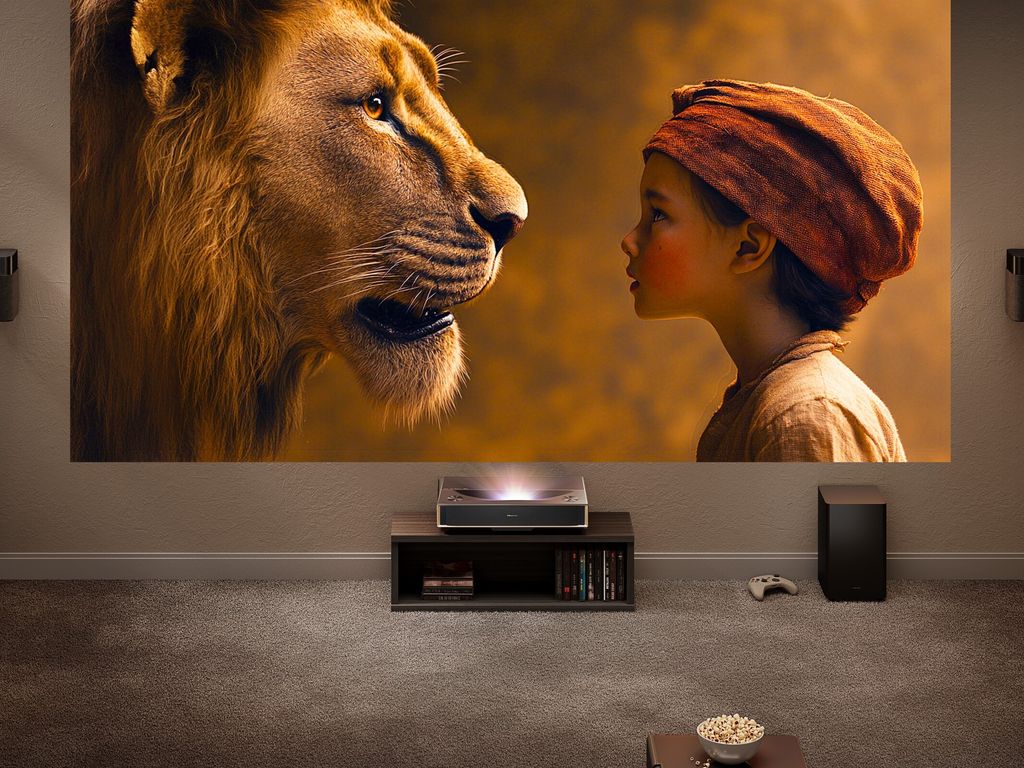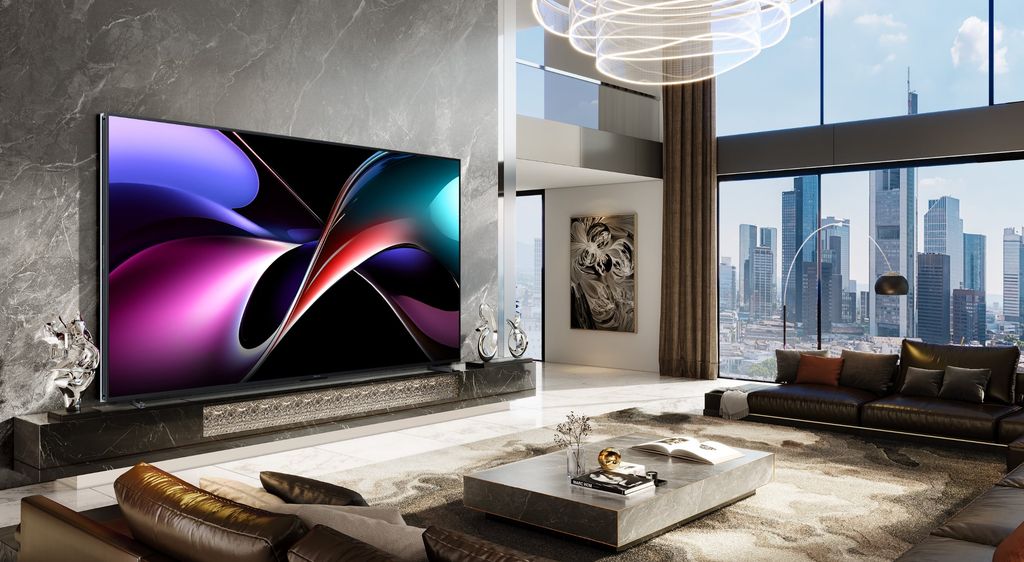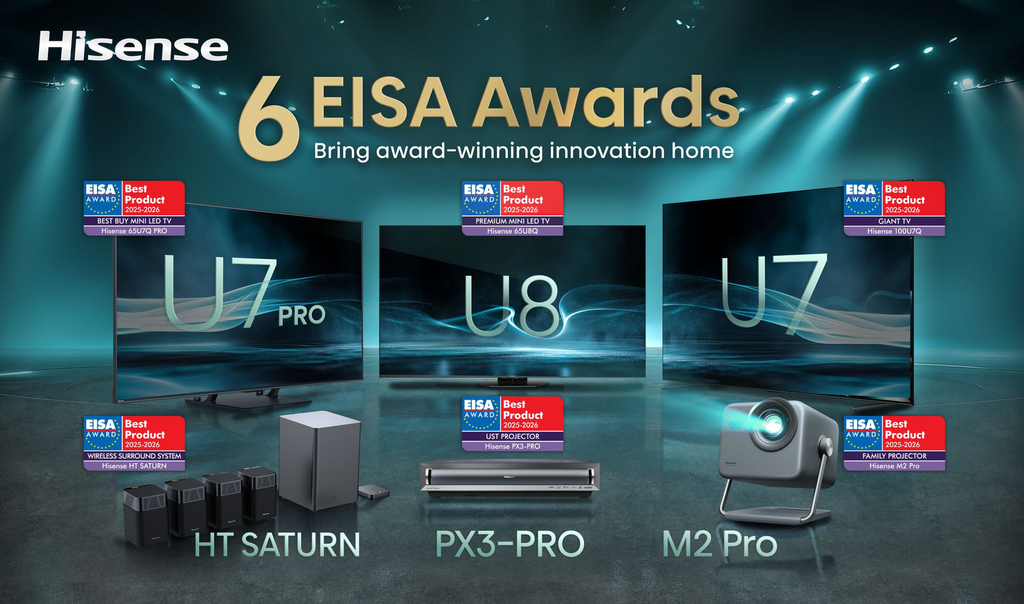Mini-LED with local dimming: Precise backlight control ensures better contrast and deeper blacks.
Hi-View Engine: AI-assisted processor improves image quality and colors.
Quantum Dot Colour: Wide color gamut and more natural color representation.
Total HDR Solution: Supports Dolby Vision, HDR10, HDR10+, and HLG.
Game Mode Plus: ALLM, VRR, and Dolby Vision Gaming with low input lag.
VIDAA Smart OS: Fast system with support for Polish voice commands.
Dolby Atmos and DTS Virtual:X: Cinematic spatial sound.
USB Recording: Ability to save content to an external storage device.
AirPlay and Miracast: Easy screen mirroring from a smartphone or tablet.
Filmmaker Mode: Original image reproduction in line with the creators' vision.
- Matching (Score)
- Our verdict
- Competing TVs
- TV appearance
- Where to buy
- Contrast and black detail
- HDR effect quality
- Factory color reproduction
- Color reproduction after calibration
- Smoothness of tonal transitions
- Image scaling and smoothness of tonal transitions
- Blur and motion smoothness
- Console compatibility and gaming features
- Input lag
- Compatibility with PC
- Viewing angles
- TV efficiency during daytime
- TV features
- Apps
- Playing files from USB
- Sound
- Details about the matrix
Hisense U6NQ Review
Available screen sizes:

Complete the survey to find out the result
Panel type: LCD VA Refresh rate: 120Hz Brand: HISENSE Resolution: 3840x2160 System: VIDAA Model year: 2024
HISENSE U6NQ - Our verdict
6.5
Overall rating
The Hisense U6NQ is a really interesting model from the Chinese manufacturer. It is the first MiniLED from the 2024 series and the only one with a refresh rate of 60 Hz. Starting with the picture quality, the MiniLED backlight combined with the VA matrix does its job – the contrast is good, and watching movies in the evening is a pleasure. Stable HDR performance, support for Dolby Vision and HDR10+, and solid colours make the TV handle most everyday tasks well. The Vidaa system works efficiently – it is fast and intuitive, without annoying stutters. A few popular apps, such as Spotify and Tidal, are missing, but most users will find what they need here, including the ability to record programs to a flash drive or external hard drive. And what about motion smoothness? It's quite decent. The option to choose between 4K at 60 Hz and Full HD at 120 Hz is a nice addition, especially if we play on consoles that often do not offer perfect 4K at 120 frames. Features such as VRR and ALLM further enhance the comfort of occasional gaming. However, it is not without its drawbacks. There are visible smearing issues in dynamic scenes, and the lack of any function to reduce this effect does not help. In terms of picture quality, this TV heavily prioritizes brightness, which sometimes leads to situations where black takes on a slight bluish hue in difficult conditions. In short: the Hisense U6NQ is a good choice for those looking for a TV that offers good picture quality and a comfortable operating system. It is not a device without compromises, but in its price range, it performs really well.
Advantages
Good contrast and black in its price class
Support for multiple HDR formats - Dolby Vision, HDR 10+
Correct color reproduction out of the box
Flexible refresh rate - 4K@60Hz or FullHD@120Hz
Decent for occasional gaming - low input lag, ALLM, VRR
Recording to USB from built-in tuners
Disadvantages
Missing several applications in the VIDAA system - Spotify or Tidal
Issues with motion blur
Dimmer algorithms work average
Movies and series in UHD quality
6.7
Classic TV, YouTube
6.5
Sports broadcasts (TV and apps)
5.0
Gaming on console
7.1
TV as a computer monitor
6.0
Watching in bright light
6.1
Utility functions
8.9
Apps
7.7
Sound quality
6.3
Complete the survey to find out what fits your preferences
HISENSE U6NQ - Competing TVs in this price range
HISENSE U6NQ - TV appearance
HDMI inputs: 3 x HDMI 2.0, 0 x HDMI 2.1 Other inputs: RCA (Chinch) Outputs: Toslink (Optical audio), eARC (HDMI), ARC (HDMI), Mini-Jack (Headphones) Network Interfaces: Wi-Fi 2.4GHz, Wi-Fi 5GHz, Ethernet (LAN) 100Mbps
Build quality: BuildQuality-Good
Stand type: Legs
Bezel colour: Graphite








Stand: Fixed
Flat design: No
Accessories: Stand
Buy in the best price
Select size:
HISENSE U6NQ - Contrast and black detail
7/10
Local dimming function: Yes, number of zones: 160 (20 x 8)

Result
61,250:1

Result
13,650:1

Result
14,700:1

Result
11,150:1

Result
5,800:1
Visibility of details in the lights:

The tested 55-inch model has a VA panel, providing deeper blacks compared to IPS/ADS panels. This technology alone ensures that contrast reaches quite a decent level. It is also worth noting that the Hisense U6NQ, as a MiniLED technology television in this version, has 160 local dimming zones, which significantly improves image quality in many scenes. During tests, for example in the movie Oblivion, the television demonstrated good separation of the hologram lights, while the contrast remained satisfactory. Unfortunately, in more demanding materials, such as the Pioneer Kuro test pattern, a noticeable drop in quality was observed. In such scenes, the dimming zones did not work correctly, leading to a significant reduction in contrast. Similar issues occurred in scenes from the movie Sicario 2, where the blooming effect was clearly visible, indicating the television's difficulties with precise management of the backlight zones. Despite these shortcomings, the overall level of contrast in the U6NQ can be considered solid, especially in this price category. The television performs well in most standard scenes, and its capabilities in displaying blacks are better than those of models with other types of panels.
Halo effect and black detail visibility:
HISENSE U6NQ - HDR effect quality
5.6/10
Supported formats: HDR10, HDR10+, Dolby Vision, Dolby Vision IQ, HLG Color gamut coverage: DCI P3: 89.0%, Bt.2020: 71.0%
Luminance measurements in HDR:

Result
443 nit

Result
426 nit

Result
505 nit

Result
442 nit

Result
448 nit
Hisense U6NQ offers a stable HDR effect, which is rare in TVs with local dimming. On most streaming platforms, in movies and series recorded in 4K, the TV presents consistent performance – in every tested scene, regardless of difficulty level, brightness is around 450 nits. This is a pleasant surprise, as many models in this class show significant differences – some scenes are well-lit, while others are heavily dimmed by dimming algorithms. However, Hisense U6NQ prioritizes maintaining higher brightness, which comes at the expense of black levels, as mentioned in the paragraph about contrast testing.
The HDR effect on the U6NQ is satisfying, offering a noticeable "hit" of light in bright moments, although it is worth remembering the previously mentioned blooming, which can be visible in more challenging scenes. In terms of colours, the TV also performs decently – the coverage of the DCI-P3 palette is 89%, and BT.2020 is 71%. Although these are not results that would impress more demanding users, for beginners in the world of high-quality content, the U6NQ serves as a solid choice. Thus, it presents an interesting option as an "entry-level" TV for home cinema.
Scene from the movie “Pan” (about 2800 nits)

Scene from the movie “Billy Lynn” (about 1100 nits)

One of the key aspects of testing HDR quality is the television's ability to adapt to various film materials, as each film is recorded differently and uses different parameters. Our tests showed how the Hisense U6NQ performs with challenging and less demanding scenes. In a scene from the movie Pan, which has been mastered to an impressive brightness of 2800 nits, the television unfortunately performed averagely. The image appeared muted, and the colours were too pale, resulting in a lack of depth and the impressive lighting effect seen in more advanced models. Although the lights in the distance were quite well separated, the full effect of immersion could not be achieved. In contrast, a scene from the movie Billy Lynn, which is easier to reproduce (though still not easy), performed much better. The firework effect in the background was rendered decently, although we noticed a slight problem with overexposing the brighter parts of the image. The dynamic tone mapping feature, which theoretically should improve such situations, in practice caused even more brightness on the screen, negatively affecting the overall image quality. For this reason, we recommend turning off this feature when using the Hisense U6NQ television with HDR materials.
HDR luminance chart:
HDR luminance
The Hisense U6NQ supports a wide range of HDR formats, which is important for movie lovers. On board, we find both static HDR10 and dynamic metadata Dolby Vision. However, it is worth noting that the way the image is presented varies significantly depending on the format used, even for the same movie. During tests, we noticed that in the case of static HDR10, the scene with horses did not showcase all the details – the forest in the distance was almost invisible, and details like blades of grass were not clear. Dolby Vision, on the other hand, proved to be a significant aid for the TV in reproducing these demanding scenes. Thanks to dynamic metadata, the final effect was definitely more impressive – the forest in the background became visible, and the details of the grass added realism.
The TV is also equipped with Dolby Vision IQ, which theoretically should automatically adjust the image parameters to the surrounding light, for example, brightening the screen in a bright room and dimming it in a dark one. Unfortunately, in practice, its performance leaves much to be desired. During tests, we noticed that the IQ mode could even be darker than the standard Dolby Vision mode in bright conditions. For this reason, we recommend turning off this feature and using traditional Dolby Vision settings for better image quality.
Static HDR10

Dynamic: Dolby Vision

Factory color reproduction
8/10
The Hisense U6NQ in Filmmaker mode offers truly decent colour reproduction, although it is worth noting that differences between individual units can be noticeable. The model we tested surprised us positively, especially with HD content in SDR quality. The white balance was correct, and errors around 3–4 ΔE should be acceptable for the average viewer. The TV performed slightly worse in colour reproduction with 4K HDR materials. The dominance of blue hues led to unnatural cool tones on the Colour Checker chart, giving the picture a "store-bought" character. Combined with issues in brightness characteristics – gamma and EOTF curve caused some parts of the image to be too dark – the Filmmaker mode loses some of its credibility in this case. Although the factory settings of the tested unit deserve praise, especially in SDR, there were still minor shortcomings that would require adjustment to fully leverage the capabilities of the TV.
Color reproduction after calibration
8.3/10
Although the factory settings of the Filmmaker mode on the Hisense U6NQ were quite good, we decided to carry out calibration to fully assess the capabilities of this model. Only after such an adjustment can you see how the TV performs in ideal conditions. In the case of SDR content, which was already at a high level, we managed to further improve the white balance. However, the biggest change came from the brightness characteristic correction - gamma was optimized and no longer causes excessive dimming of the image, which improves its naturalness.
For 4K HDR content, calibration also yielded positive results. We eliminated the problem of blue dominance, which translated into a more balanced and natural image. However, managing brightness in HDR materials remains a more complicated issue. The EOTF curve, although it had problems with dimming the image in the range of 10-30% brightness under laboratory conditions, reveals other shortcomings in real scenes. The TV tends to excessively brighten the smallest elements on the screen. As a result, this leads to noticeable halo effects around bright objects. This phenomenon, which we mentioned earlier in the context of contrast and HDR, stems from the technological limitations of the model and is often difficult to eliminate.
In short: although the Filmmaker mode with factory settings looked decent, calibration allowed for an even better effect - minor adjustments resulted in a more balanced image, especially in HDR content. Calibration will be a beneficial step for users seeking the highest quality image.

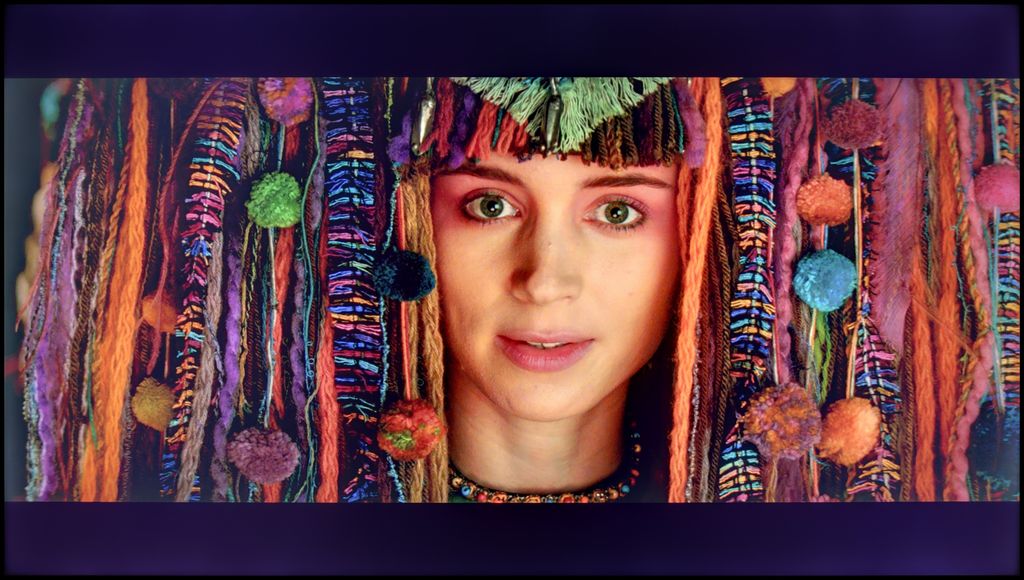
HISENSE U6NQ - Smoothness of tonal transitions
7.8/10
The fluidity of tonal transitions in the Hisense U6NQ is at a high level. In most scenes, there are no noticeable issues with colour blending, which provides a pleasant and cohesive visual experience. However, a more discerning eye may spot minor imperfections in specific cases, such as the scene with the blue sky in Kingsman or the final scene with the red background. These subtle shortcomings are, however, small enough not to affect the perception of the image for most users. Overall, the television performs very well in this category.








Image scaling and smoothness of tonal transitions
5.6/10
Smooth transition function
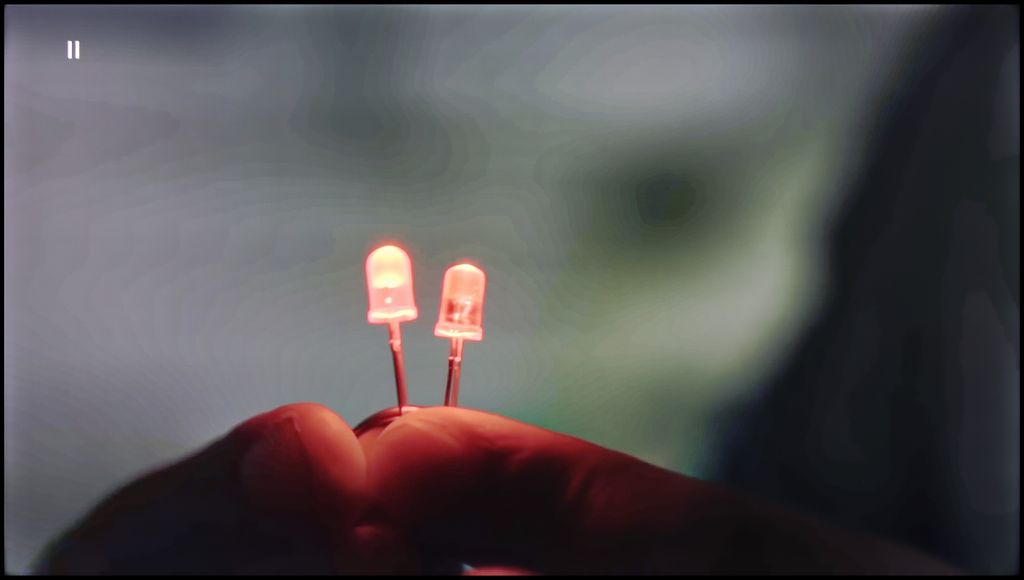
Image without overscan on the SD signal

With high-quality materials, such as 4K, tonal transitions on the U6NQ look really good – the colours blend nicely and the image is cohesive. Unfortunately, when we switch to content in a lower resolution, the television does not offer any additional features that could improve this aspect. An example is the test with the light bulb, where it is clear that the television has trouble rendering subtle tonal transitions.
On the other hand, digital processing performs quite well. The image looks plastic, pleasantly soft, and free of excessive aliasing. Moreover, thanks to the sharpness settings, it can be adjusted according to personal preferences – whether towards a softer or sharper image. Overall, although scaling lower-quality materials could be better, the television does well with image processing.
HISENSE U6NQ - Blur and motion smoothness
3.4/10
Maximum refresh rate of the panel: 120Hz
Film motion smoothing option: Yes
Blur reduction option: No
BFI function 60Hz: No
BFI function 120Hz: No
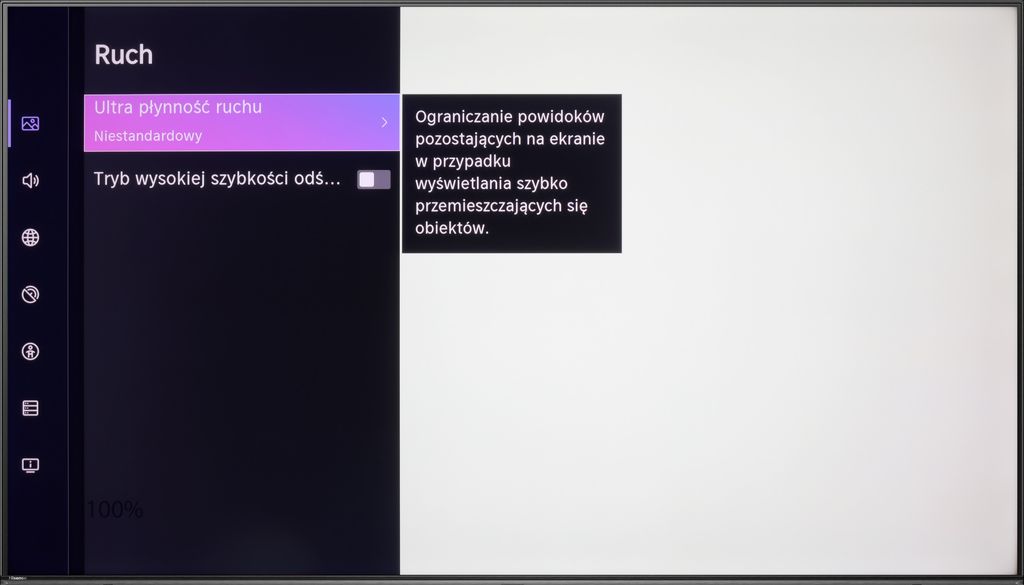
The Hisense U6NQ offers a native refresh rate of 60 Hz at a 4K resolution, but the manufacturer has added a feature that allows increasing the refresh rate to 120 Hz at the cost of reducing the resolution to Full HD. This is a solution we have seen before in TVs from TCL, such as the C655 and the C655 PRO. This gives the user the option to choose – higher motion fluidity or full resolution. This is a sensible approach, especially considering that many games on new-generation consoles do not achieve full performance in 4K at 120 Hz.
As for movies, the TV is equipped with a motion smoothing feature that allows adjusting motion characteristics to personal preferences. This can create a more cinematic effect or increase fluidity in dynamic scenes. Overall, the Hisense U6NQ offers reasonable solutions for motion fluidity that should satisfy both gamers and movie lovers.
Blur (native resolution, maximum refresh rate):



Unfortunately, the Hisense U6NQ does not have a motion blur reduction option, and the response time of the panel leaves much to be desired. Motion blur effects are particularly noticeable in darker elements of the image, which can be bothersome during dynamic scenes in movies or games. These issues make the television perform rather mediocre in this category, which is worth considering when choosing a device if motion smoothness is a significant criterion for us.
HISENSE U6NQ - Console compatibility and gaming features
6.3/10
ALLM: Yes
VRR: Yes
VRR range: 48 - 60Hz
Dolby Vision Game Mode: Yes
Correct implementation of HGIG: No
1080p@120Hz: Yes
1440p@120Hz: No
4K@120Hz: No
Game bar: Yes


The Hisense U6NQ offers the option to choose between 4K at 60 Hz and Full HD with a refresh rate of 120 Hz. This solution may appeal to gamers who want to decide what is more important to them – higher resolution or smoothness. The television supports features such as ALLM and VRR, which help in achieving smoother gameplay. A nice addition is the GameBar – an easy-to-use panel that allows for quick changes to picture settings and checking statistics. It also includes a Dolby Vision Gaming mode, which works with low input lag, a big plus for console enthusiasts. Unfortunately, it lacks HGiG, which could further enhance HDR quality in games. Nevertheless, the Hisense U6NQ performs quite well as a gaming television, especially for those who play occasionally and do not require the highest refresh rates in 4K. It is a solid choice for less demanding users.



HISENSE U6NQ - Input lag
9.9/10
The Hisense U6NQ TV offers a very low input lag of 14 ms, making it a good choice for gamers, especially those who prefer dynamic titles. It's also worth noting that the Dolby Vision mode in games works really well here. This is a pleasant surprise, as on many other televisions this HDR mode performs only averagely.
| SDR | HDR | Dolby Vision |
|---|---|---|
| 1080p60: 14 ms | 2160p60: 14 ms | 2160p60 DV: 13 ms |
| 1080p120: 9 ms | ||
| 2160p60: 14 ms |

HISENSE U6NQ - Compatibility with PC
6/10
Chroma 444 (maximum resolution and refresh rate): Yes
Font clarity: Good
Readability of dark text and shapes: Very Good
Input lag in PC mode (4K, maximum refresh rate): 14ms
Matrix subpixel arrangement: BGR
Max refresh rate: 120Hz
G-Sync: Yes
As a screen for working with a computer, the Hisense U6NQ performs quite decently. The fonts are readable enough, so it's sufficient for everyday writing or browsing the internet.
When it comes to gaming, the television supports G-Sync, but only at 4K resolution at 60 Hz. Unfortunately, if someone was counting on 120 Hz smoothness in 1080p with G-Sync enabled, they might be disappointed – the television does not offer this. It's a bit of a shame, as it could have been a good solution for gamers who prefer smoothness over resolution.
HISENSE U6NQ - Viewing angles
3/10
Brightness drop at an angle of 45 degrees: 76%
The viewing angles on the Hisense U6NQ are average, which is typical for VA panels. This technology offers better contrast and deeper blacks but at the expense of image visibility at wider angles. It's a classic compromise – in TVs with IPS panels, the situation is reversed, where the viewing angles are wider, but the contrast and blacks suffer in quality.
HISENSE U6NQ - TV efficiency during daytime
6.1/10


Matrix coating: Satin
Reflection suppression: Good
Black levels during daytime: Good
The Hisense U6NQ performs well in bright rooms thanks to the satin finish on the panel, which effectively suppresses reflections. The average brightness on SDR materials, such as standard television, is 488 cd/m², which is more than sufficient for comfortable viewing even in somewhat challenging lighting conditions.
Matrix brightness
Average luminance SDR
Hisense U6NQ: 488 cd/m2
HISENSE U6NQ - TV features
8.9/10
System: VIDAA
System performance: Good
- HDMI inputs: 3 x HDMI 2.0, 0 x HDMI 2.1
- Other inputs: RCA (Chinch)
- Outputs: Toslink (Optical audio), eARC (HDMI), ARC (HDMI), Mini-Jack (Headphones)
- Network Interfaces: Wi-Fi 2.4GHz, Wi-Fi 5GHz, Ethernet (LAN) 100Mbps
- TV reception: DVB-T, DVB-T2, DVB-S, DVB-S2, DVB-C
Classic features:
Recording to USB (terrestrial TV): Yes
Recording programming: Yes
Picture in Picture (PiP): No
RF remote control (no need to aim at the screen): RF
Backlit remote control: No
Teletext: Yes
Audio only mode: Yes
Bluetooth headphones support: Yes
Simultaneous Bluetooth headphones & TV audio: Yes
Smart features:
AirPlay: Yes
Screen mirroring (Windows Miracast): Yes
Voice search: Yes
Voice search in native language: Yes
Ability to connect a keyboard and mouse: Yes




The Vidaa system that powers the Hisense U6NQ is probably one of its stronger points. It is fast, runs smoothly, and most importantly – doesn't suffer from any stuttering that can be frustrating on other televisions. It's nice that you can use voice search, which significantly simplifies operation. There are quite a few apps available, but unfortunately, there are no music apps like Spotify or Tidal. It’s a pity because a TV is not just for movies and shows – some would probably also like to use it for listening to music.
Among the additional features, we have the ability to record TV programs on a USB drive or external hard drive. There is also AirPlay and Miracast, so it's easy to stream content from a smartphone. The built-in Bluetooth is also useful, allowing you to connect headphones, a mouse, or a keyboard. The only thing that is really missing here is the PiP (picture-in-picture) function. If it were added, the TV would be complete for features. Nevertheless, the Hisense U6NQ offers plenty and should be sufficient for most users.
Sound connection options
HDMI audio:
Other audio outputs:
Toslink: Yes
Stereo (Mini-Jack): Yes
Wireless audio:
Bluetooth: Yes
Obsługiwane formaty audio:
Dolby Digital Plus 7.1: Yes
Dolby True HD 7.1: Yes
Dolby Atmos in Dolby Digital Plus (JOC): Yes
Dolby Atmos in Dolby True HD: Yes
DTS:X in DTS-HD MA: Yes
DTS-HD Master Audio: Yes
Ułatwienia dla seniorów
Numeric keyboard on TV: No
Font size adjustment: Yes
Audio description: Yes
HISENSE U6NQ - Apps
7.7/10























HISENSE U6NQ - Playing files from USB
8.5/10

| Maximum photo resolution: | Supported photo formats: |
|---|---|
The built-in file player in the Hisense U6NQ should satisfy most users. It supports Polish characters and allows easy editing of displayed subtitles, which is a big plus. Unfortunately, it lacks support for the AV1 codec, which may be an issue for those looking to play newer video formats. However, for less demanding users, the player’s features will be fully adequate.
HISENSE U6NQ - Sound
6.3/10
-
Maximum volume
Supported codecs
(TV speakers)
Dolby Digital Plus 7.1
Dolby True HD 7.1
Dolby Atmos in Dolby Digital Plus (JOC)
Dolby Atmos in Dolby True HD
DTS:X in DTS-HD MA
DTS-HD Master Audio
The Hisense U6NQ is equipped with a standard set of speakers with a power of 20 W, which is a typical solution in this class of TVs. The sound is decent but nothing particularly special. However, it is worth noting the support for all popular audio codecs, including DTS and Dolby Atmos. This allows for easy connection to a home theatre system or soundbar, resulting in significantly better audio experiences than the built-in speakers.
Acoustic Measurements
No acoustic data
HISENSE U6NQ - Details about the matrix
Software version during testing: V0000.07.60l.O0410
Subpixel Structure:

Panel uniformity and thermal imaging:
Backlight Type: PFS LED

Founder and originator of the "ChooseTV" portal

Journalist, reviewer, and columnist for the "ChooseTV" portal
See articles related to Hisense U6NQ:
1/16/2025
1/16/2025
1/15/2025
9/25/2025







